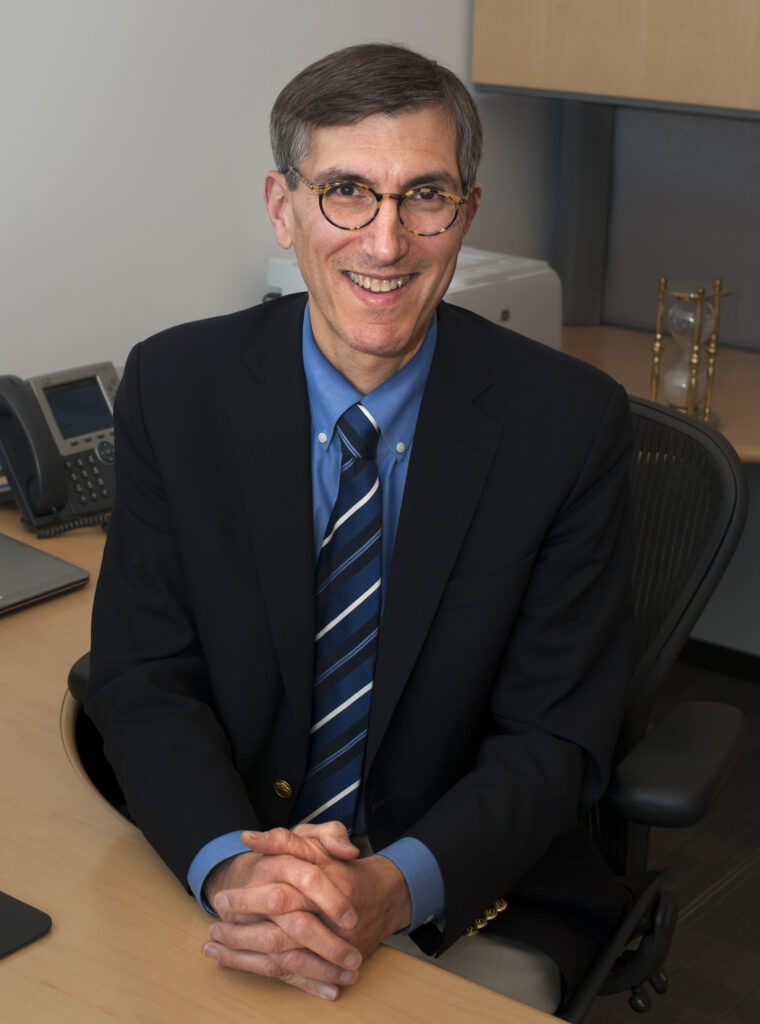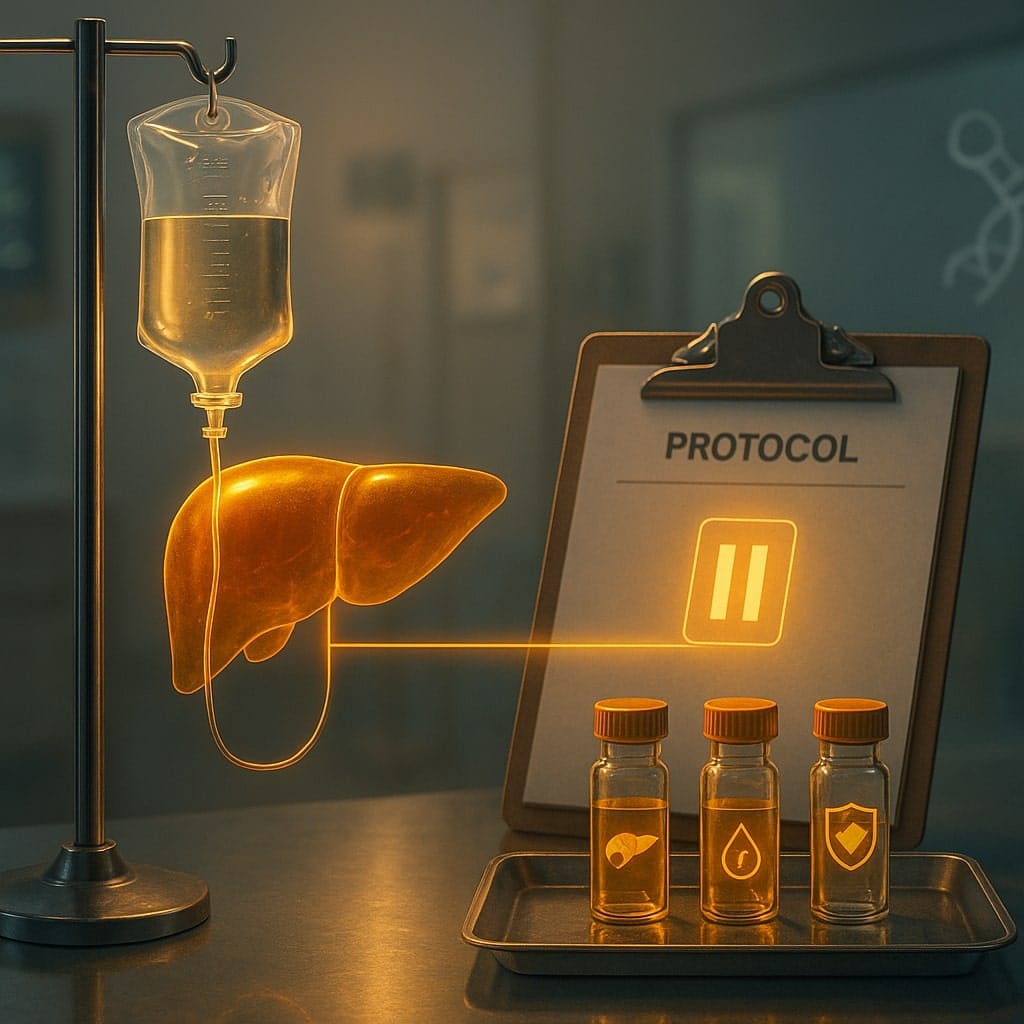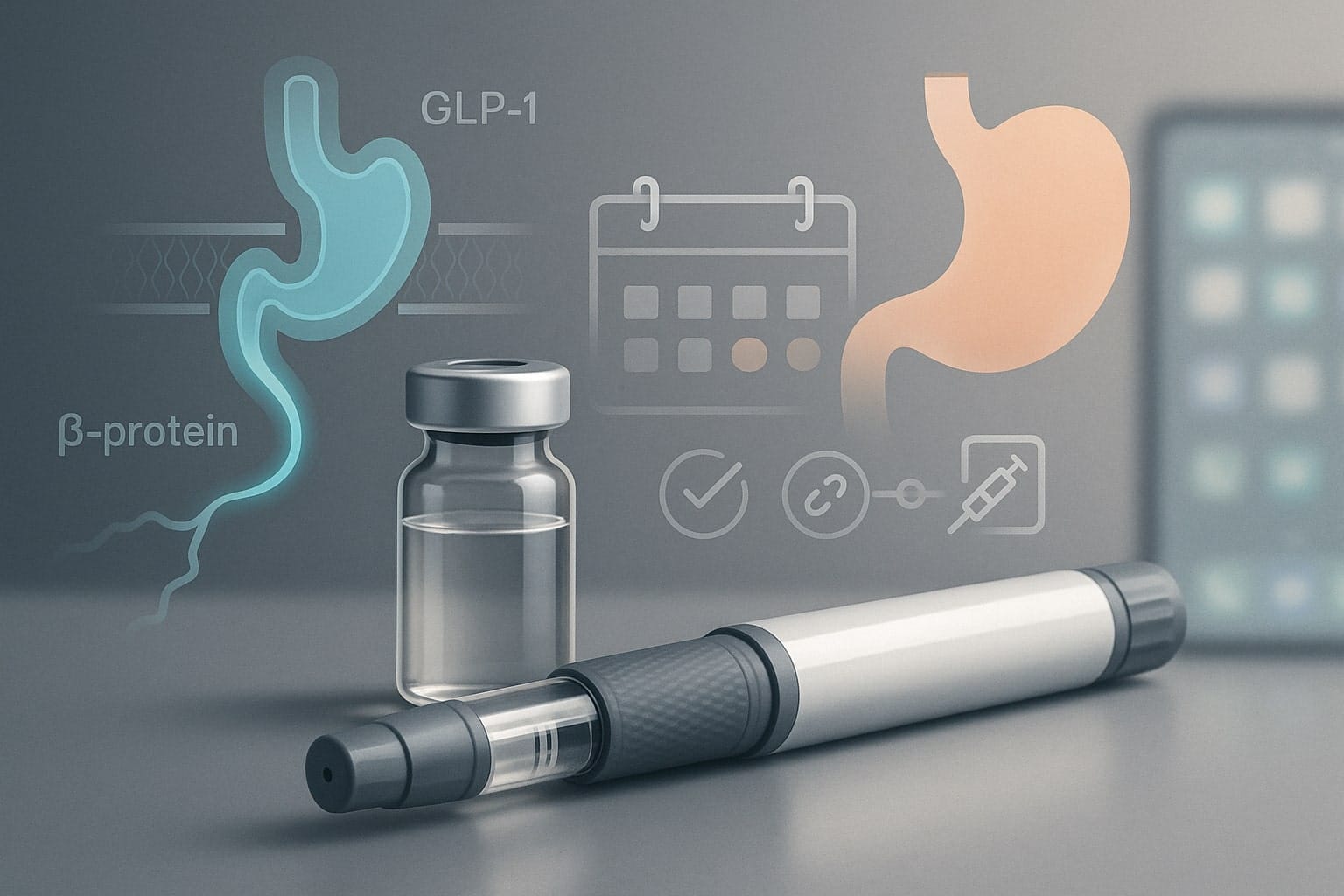When Dr. Peter Marks walked out of the FDA’s headquarters for the last time this week, it sent a tremor through the U.S. biotech community. Marks – a name that rarely graced headlines outside scientific circles – had quietly become a linchpin in America’s biomedical innovation engine. For nine years he led the FDA’s Center for Biologics Evaluation and Research (CBER), shepherding the approval of 22 gene therapies and other cutting-edge treatments. His sudden resignation, tendered “with a heavy heart” and under protest of what he called an assault on scientific truth, has left scientists, investors, and policymakers alike asking: What now?

To understand why Marks’ exit feels like such a seismic event, it’s worth appreciating how deeply he shaped today’s biotech landscape. A hematologist-oncologist turned regulator, Marks became the FDA’s point man for breakthrough technologies – from the first gene therapies curing rare diseases to the mRNA vaccines that helped end a pandemic. He played a pivotal role in Operation Warp Speed, the crash program that delivered COVID-19 vaccines in under a year. Under his watch, the FDA ushered in a “new era of scientific breakthroughs – from new vaccines to curative cell and gene therapies” in the words of one industry group. In short, Marks has been the champion at the gate of biotech innovation, blending scientific rigor with an urgency to get life-saving technologies to patients.
Now, with that champion gone, the future of biotech innovation in the U.S. stands at an uncertain crossroads. Will the regulatory environment he cultivated continue to nurture bold science, or could policy shifts slow the momentum of medical breakthroughs? The stakes are immense: the answers will ripple from research labs to Wall Street, and ultimately, to patients awaiting the next cure.

Table of Contents
ToggleShaping the Frontier: Marks’ Legacy in Biotech
If there’s one theme to Dr. Marks’ tenure, it’s the conviction that regulation should advance innovation, not impede it. He pushed the FDA to be as cutting-edge as the science it oversees. Under his direction, CBER implemented new pathways and organizational changes to keep pace with the biotech boom. He helped roll out the Regenerative Medicine Advanced Therapy (RMAT) designation after 2016 to expedite promising gene and cell therapies, and often noted the “large upswing” in gene therapy filings – over 800 IND applications by 2019 – prompting the hiring of dozens of new reviewers to manage the influx. In 2023, he led a reorganization that created the Office of Therapeutic Products, a unit dedicated to advanced therapies, which soon doubled the rate of gene therapy approvals. He also championed new guidance to clarify regulatory expectations and even launched a global pilot to review gene therapies jointly with other regulators. From manufacturing hurdles to the promise of AI in drug development, Marks was proactive; he mused about using AI to improve biologics production and streamline FDA processes. The message was clear: the FDA had to evolve alongside the science.
The results of this forward-looking approach were tangible. When Marks took the helm, gene therapy was still largely theoretical in the U.S. – soon after, it became reality. The once-elusive dream of curing genetic disease began turning into approved products under his watch. By early 2025, the FDA had approved treatments that restore vision in hereditary blindness, halt fatal neuromuscular disorders, and reprogram patients’ immune cells to fight cancer. The agency’s tally included dozens of cell and gene therapy approvals, spanning conditions from rare childhood diseases to common cancers. Not long ago, many of these breakthroughs would have seemed like science fiction; Marks helped make them fact.
Marks also proved willing to take calculated risks to speed hope to patients. In 2023, for example, the FDA – encouraged by Marks’ leadership – granted accelerated approval to a gene therapy for Duchenne muscular dystrophy based on early trial data. It was the first-ever gene therapy for that deadly disease, approved on a surrogate biomarker while confirmatory studies continued. The decision stirred debate in scientific circles, but it thrilled families who previously had no treatment at all. Moves like this demonstrated Marks’ philosophy in action: use every tool in the regulatory toolbox (expedited designations, surrogate endpoints, flexibility in trial requirements) to get promising therapies to patients sooner, while still insisting on follow-up evidence to ensure those therapies truly work.
Crucially, even as he accelerated timelines, colleagues say he never compromised on core scientific standards. “One of the most brilliant, dedicated scientists and public servants,” is how former White House adviser Dr. Ashish Jha described Marks, noting that he “ushered in scientific rigor and transparency” at the FDA. That balance – agility and rigor – defined Marks’ reputation. It won him respect from industry executives who saw a regulator eager to help new cures, and from academics who saw an ally for evidence-based decision-making. In the oft-tense dance between innovation and safety, Marks strove for a sweet spot: fast, but not loose. It’s a legacy of pragmatic optimism that transformed how the FDA engages with cutting-edge science.

Milestones of Marks’ FDA Tenure
To appreciate the arc of Dr. Peter Marks’ influence, it helps to look at some major milestones during his time at the FDA:
- 2016: Marks is appointed CBER Director, taking charge of the FDA’s oversight for vaccines, biologics, and cutting-edge gene/cell therapies. His arrival signals a new focus on advanced biotech products at the agency.
- 2017: The FDA approves the first CAR-T cell therapies (Novartis’s Kymriah and Gilead’s Yescarta) for leukemia and lymphoma, as well as the first gene therapy for an inherited disease (Spark Therapeutics’ Luxturna for congenital blindness). These landmark approvals launch a new chapter in regenerative medicine, with Marks’ CBER team helping steer these products through review.
- 2019: Anticipating a coming wave of applications, FDA leadership (including Marks) announces plans to dramatically expand gene therapy oversight. They predict the FDA will be approving 10–20 cell and gene therapies per year by 2025, based on a pipeline of hundreds of trials. To support this, CBER ramps up hiring (adding ~50 reviewers) and embraces new expedited programs like RMAT to speed rare disease treatments.
- 2020: Operation Warp Speed achieves the unprecedented: an mRNA COVID-19 vaccine authorized just 11 months after the virus’s genetic sequence was published. Marks played a leading role in this federal-industry partnership for vaccines, helping ensure rigorous trials and transparent safety reviews even under immense time pressure. The success of Warp Speed becomes a blueprint for how the FDA might expedite other urgent therapies.
- 2022: Regulatory momentum continues. The FDA greenlights multiple high-profile gene therapies, including ones for beta thalassemia and cerebral adrenoleukodystrophy (Bluebird Bio’s Zynteglo and Skysona) and for hemophilia B (CSL/UniQure’s Hemgenix). These approvals – among the 22 gene therapies overseen during Marks’ tenure – bring curative treatments to patients with previously incurable illnesses, solidifying the U.S. as the leader in advanced therapeutics.
- 2023: CBER creates a new Office of Therapeutic Products to handle the surge of cell/gene therapy work, streamlining review processes. The FDA approves the first CRISPR-based gene editing therapy (brand name Casgevy) for sickle cell disease, a milestone for genome editing medicine. It also grants accelerated approval to the first gene therapy for Duchenne muscular dystrophy (Sarepta’s Elevidys) for young children – a decision made possible by Marks’ willingness to accept novel surrogate endpoints. Drawing on lessons from COVID, Marks initiates a pilot program (nicknamed “Operation Warp Speed for rare diseases,” later formalized as the START program) aimed at constant-contact collaboration with sponsors to speed up development of gene therapies for small patient populations.
- 2024: The FDA hits a record pace in approvals. 10 new cell and gene therapies for rare diseases win approval in this single year, doubling the annual approval rate after the OTP reorganization. CBER continues to modernize: it publishes numerous guidance documents to help developers, holds public meetings with patients, and launches the CoGenT (Collaboration on Gene Therapies) Global Pilot, exploring concurrent reviews of gene therapies with European and other regulators – a step toward international harmonization in biotech oversight.
- 2025: Dr. Marks resigns amid a clash with the new political leadership, closing a nine-year chapter of regulatory innovation. In his final months, he had laid out plans to expand the START pilot and urged that the FDA “really try to move things ahead” in the next few years. His departure, effective April 5, 2025, comes with a warning that undermining science at the FDA would endanger public health. The mantle now passes to his successors to carry forward – or potentially recalibrate – the frameworks and momentum he established.

Shockwaves: Market and Industry React
The news of Marks’ exit reverberated from trading floors to research labs. In the stock market, investors wasted no time registering their jitters. Biotech shares tumbled in the immediate aftermath of his resignation announcement, as uncertainty clouded the outlook for FDA approvals. The biotech sector was already on fragile footing after two rough years, and the loss of a key regulatory champion felt like one more blow. Many small- and mid-cap drug developers – especially those in rare diseases, who often bank on flexible FDA treatment of early data – saw their stock prices slide further. In fact, some of these companies’ stocks had been slumping for weeks amid rumors of Marks’ possible ouster; by early 2025, a basket of rare disease biotechs had plunged over 20% year-to-date on “heightened fears about Marks’ likely exit and the future of FDA regulatory flexibility”. His official resignation only amplified those fears. Even large biotech players weren’t immune: high-profile names like Moderna (an mRNA vaccine leader whose fortunes have been tied to Marks’ domain) reportedly traded down on the news, a sign that Wall Street is bracing for a potentially tougher stance from the FDA on cutting-edge products.
Analysts have been quick to weigh in on what Marks’ departure means for the sector. Michael Yee, a biotech analyst at Jefferies, had long cautioned clients that Marks’ presence at the FDA was a kind of security blanket for innovative drug developers. Now that he’s gone, Yee observes, a key risk factor has materialized. In his analysis, companies planning to seek approval using surrogate endpoints or limited early data – strategies Marks often encouraged to expedite drugs for unmet needs – face “heightened risk” going forward. The generous regulatory flexibility that benefited these firms might not persist in the same form. Little wonder, then, that their valuations have been marked down. Some analysts have even begun dubbing the situation the “Marks discount,” reflecting the loss of investor confidence that the FDA will remain as accommodating to novel therapies without Marks at the helm. “Biotech markets [were] already teetering, and this was the last thing they needed,” one industry observer noted, encapsulating the mix of frustration and anxiety permeating the field.
Industry leaders and trade organizations responded with an outpouring of concern – and pointed criticism of the forces that drove Marks out. The Biotechnology Innovation Organization (BIO), representing biotech companies, praised Marks’ “extraordinary leadership” and credited him with helping the FDA shepherd in the wave of vaccines, cell and gene therapies that “strengthened and saved the lives of millions”. In the same breath, BIO warned that the loss of such experienced leadership “will erode scientific standards and broadly impact the development of new, transformative therapies”. The Alliance for Regenerative Medicine (ARM), a group focused on gene and cell therapy companies, was equally alarmed. Its CEO Tim Hunt called Marks “a visionary leader, advocate for rare disease patients and champion of cell and gene therapy… [who] will be missed”. ARM’s statement urged the incoming FDA leadership to “build on recent reform and modernization efforts” rather than roll them back – a polite way of saying, please don’t squander the progress we’ve made. Even former FDA officials weighed in: Ex-Commissioner Robert Califf (who worked with Marks) said what Marks wrote in his resignation letter “should be frightening to anyone committed to the importance of evidence to guide policies”. It’s extraordinarily rare for a past FDA chief to use words like “frightening” about the current state of affairs, which shows how deeply this incident resonated.
Scientific and medical voices echoed the dismay. Dr. Eric Topol, a prominent physician-researcher, bluntly declared “This is very bad for biotech at FDA” – reflecting the view that Marks was uniquely attuned to the needs of biotech innovation. Academic leaders, too, spoke out. “The FDA will be dramatically weaker, less effective” after Marks’ exit, warned Dr. Ashish Jha, who lauded Marks as one of the brilliant public servants guiding science in government. Across social media, one could see an unusual mix of anger and sadness: anger that political interference had pushed out a defender of science, and sadness at the vacuum of expertise his departure creates. The consensus among biotech CEOs, patient advocacy groups, and scientists was remarkably consistent – a chorus of “What a loss, and what a warning sign.” The shockwaves from Marks’ resignation have not only rattled stock prices; they’ve shaken the confidence of an entire ecosystem that relies on a steady, science-driven FDA.
Policy at a Crossroads: What Changes Without Marks?
With Dr. Marks gone, the FDA’s policy direction for biotech is suddenly in flux. The big question: Will the agency maintain the progressive frameworks he helped build, or will it shift toward a more cautious, restrictive stance? A lot hangs in the balance, and early indicators have observers on edge.
One immediate area of concern is the future of accelerated approvals and other fast-track programs for high-risk, high-reward therapies. Marks was their staunch champion, often arguing that serious diseases warranted some uncertainty if the potential benefit was great. Now, without his guiding hand, many wonder if the FDA will pull back on approving drugs based on preliminary data or surrogate markers. In fact, this is exactly what some analysts foresee – a tightening of standards. Companies developing treatments for rare diseases or using novel modalities (like gene editing) often plan to seek approval on limited trial data, banking on FDA’s prior flexibility. But as Michael Yee noted, those plans may face a colder reception going forward. If FDA reviewers no longer feel empowered to take leaps of faith, we could see delays while sponsors accumulate more evidence. In practical terms, patients might wait longer for new therapies, and small biotechs might need to raise money for additional studies instead of reaching the market sooner.
Another wild card is the broader political environment, which cannot be ignored. Marks didn’t resign in a vacuum – he did so in direct protest of what he described as anti-science pressure from above. The new Secretary of Health and Human Services, Robert F. Kennedy Jr., is a vocal vaccine skeptic, a fact that looms large over this saga. If an FDA leader of Marks’ stature felt he could not coexist with HHS’s new direction, it raises the specter of policy shifts that go well beyond one person. Will we see more skepticism toward new vaccines, for instance, or a general precautionary approach to approvals? It’s not far-fetched to imagine longer review times or additional hurdles for products in contentious areas (like vaccines) under an HHS leadership that has publicly doubted them. Even for gene therapies and other biotech advances, a climate of mistrust in science could trickle down: FDA staff might feel political pressure to err on the side of conservatism, lest they be second-guessed by their new bosses.
That said, there are some reassurances that not everything will change overnight. For one, the FDA’s new acting commissioner (or in this scenario, Commissioner) Dr. Marty Makary has indicated he supports the agency’s continued use of “conditional approvals” for rare diseases. Early signals suggest Makary, a physician himself, is not looking to slam the brakes on the accelerated pathways that Marks championed. Insiders note that despite the turmoil, the FDA’s career scientists and review teams remain hard at work – indeed, they were exempted from recent federal workforce cuts, insulating the drug review process from broader downsizing. By all reports, drugs and biologics are still being approved on schedule; the machinery of the FDA continues to churn, at least for now. This hints that the institution’s momentum might carry it forward in the short term, even without Marks.

However, longer-term policy initiatives that were near to Marks’ heart face uncertainty. Take the START pilot program – an ambitious “Warp Speed for rare diseases” effort he had launched to accelerate gene therapies for ultra-small patient populations. Marks envisioned that program as a multi-year push to dramatically cut development timelines by keeping FDA in constant communication with drug sponsors. Expanding such a pilot will require commitment from FDA leadership and resources from Congress. Will the new regime prioritize it? The jury is out. Observers point out that without Marks lobbying for it, START could stall; it might be allowed to run its course as a small pilot but not get the expanded funding needed to scale up (Marks himself noted it would need more staff and funding to succeed long-term). The same goes for other forward-looking reforms Marks advocated – from modernizing clinical trial design to leveraging AI for drug safety monitoring. These ideas now lack their chief evangelist at the FDA. Whether they progress will depend on who steps into Marks’ role and how much political capital they’re willing (or allowed) to spend on innovation-friendly policies.
Indeed, a big unknown is who will replace Peter Marks at CBER. The Biden administration (under which Marks served) valued scientific expertise in that role; the current administration’s priorities appear different. If a like-minded successor with deep experience in biologics is appointed, much of Marks’ legacy could be preserved. If instead the role goes to someone more conservative or politically minded, we could see a deliberate pivot in regulatory philosophy. The choice of successor will signal whether the FDA continues on the trajectory Marks set – embracing gene therapies, mRNA technology, and novel trial designs – or whether it shifts to a more hesitant footing. In the interim, the center’s acting leadership will try to project stability, but there’s no denying that a change at the top can reshape agendas. Policy, after all, is people-driven.
At this crossroads, all eyes in the biotech world are on the FDA and HHS to read the tea leaves of what comes next. The optimists believe the agency’s intrinsic commitment to science will carry on: guidelines and programs put in place won’t be easily undone, and the professional staff will keep the ship steady. The pessimists fear a slow drift toward caution, with fewer bold initiatives and more bureaucratic drag. Realistically, the FDA’s posture in the next couple of years will likely land somewhere in between – not an abrupt U-turn from Marks’ era, but perhaps a subtle tap on the brakes in certain areas. How hard that brake is tapped may well determine whether the U.S. sustains its biotech momentum or gradually surrenders some of its edge.

Navigating Uncertainty: Biotech Adapts to a New Normal
For biotech companies, investors, and researchers, the response to this leadership upheaval is equal parts resolve and recalibration. The biotech train is still moving forward – it has to, given the investments and patients at stake – but everyone on board is checking the route and adjusting for potential detours ahead.
Drug developers are already tweaking their game plans in light of a possibly stricter FDA. CEOs and regulatory affairs teams are reassessing how they will advance experimental therapies without Marks as a backstop at the agency. For some, this means preparing for more extensive clinical trials than originally anticipated, to ensure their data are bulletproof. A gene therapy startup that might have hoped for an accelerated approval on a small Phase 2 study, for instance, could decide to run a larger Phase 3 trial or include more robust endpoints, just in case the FDA is less lenient. “Plan B’s” that were once in the drawer are being dusted off. Surrogate markers and novel endpoints – a favorite approach in Marks’ CBER – may get a second look by companies asking, “Will the new FDA honor the precedent, or should we gather traditional outcomes too?” The likely result is more time and money spent by companies to de-risk their regulatory journey. As one biotech executive lamented privately, “We have to assume the FDA might want more now – more data, more patients, more follow-up – and plan accordingly.” In a sector where timing is everything (patents expire, cash burns fast), these adjustments are significant. Some firms might even stagger or delay certain filings, opting to wait and see how the winds blow, rather than be the canary testing a new, uncertain environment.
Investors, for their part, dislike uncertainty most of all – and they are reacting in kind. The biotech investment community, from venture capitalists to public-market traders, is re-evaluating risk models on regulatory matters. Already, the industry has been in a financing slump; global biotech funding in 2023 was down over 40% compared to the prior year amid rising interest rates and other headwinds. Marks’ resignation adds another layer of caution. Venture capital firms might become even choosier about backing therapies that face murky regulatory paths. If a few weeks ago a VC was willing to bet on a company with a cutting-edge gene editing platform (confident that the FDA under Marks would find a way to approve it swiftly if it worked), today that same VC might demand the company hit additional milestones or generate more safety data before investing. On Wall Street, portfolio managers may shift toward biotech companies with more predictable product lines or those already on the market, steering a bit away from the early-stage moonshots. In practical terms, this could mean lean times for some startups. The cost of capital for risky biotech ventures may rise, and IPO windows could stay shut longer. Conversely, some well-capitalized players might see opportunity in the downturn – for example, pharma giants could swoop in to acquire promising biotechs at a discount, reasoning that they have the resources to navigate any FDA turbulence. In any case, investors are actively recalibrating, and innovation often feels the pinch when money gets tighter.
Researchers and clinicians at the frontlines of biotech innovation are also adjusting their expectations. Many scientists who have been developing therapies under the FDA’s expedited programs are now engaging more with advocacy and public communication, hoping to ensure the progress doesn’t stall. There’s a renewed emphasis on transparency and education – explaining to the public (and policymakers) why accelerating cures doesn’t mean compromising safety. We see prominent researchers penning op-eds and speaking at conferences about the need to keep the FDA driven by science, not politics. Some are invoking Marks’ work as an example of smart regulatory innovation that should continue. At the same time, academic and industry researchers are devising contingency plans. For instance, if a U.S. trial or approval seems like it might face hurdles, they might look to Europe or other regions for parallel pathways (a strategy sometimes called “plan global”). Historically, companies often sought FDA approval first; now some might prioritize a dual track or even a non-U.S. first approval if they perceive the FDA process slowing. It’s a subtle shift, but over time it could have big implications for where cutting-edge research is done and where trials launch.
Another area of concern is talent – both within the FDA and in the broader biotech field. Marks’ departure has raised worries about a brain drain. If top scientists inside the FDA feel demoralized or fear that their work will be undermined by political agendas, will they stay? The FDA’s ability to review complex gene therapies depends on attracting and retaining experts in fields like genomics, immunology, and data science. Industry groups like ARM explicitly urged the administration to maintain a culture that “attracts, retains, and develops top scientific talent”, cautioning that the loss of Marks should not trigger an exodus of expertise. So far, there’s no mass departure from FDA – and it’s worth noting that many civil servants are deeply committed to the agency’s mission and will persevere. But morale is a fragile thing. A few high-profile resignations or early retirements from CBER in the wake of this could snowball, just as a vote of confidence from the new leaders could stabilize the ship. Outside the FDA, young scientists and biotech entrepreneurs are watching closely too. The U.S. has been the premier destination for biotech innovation in part because of a supportive regulatory environment; if that reputation erodes, will the best and brightest start to think twice about launching their big idea in Boston or San Francisco versus, say, London or Singapore? It’s a far-off scenario, but not unthinkable. For now, most are taking a “wait and see” approach – continuing their work, but remaining vigilant and ready to adapt if the rules of the game change.
In short, the biotech community is recalibrating rather than retreating. Companies are adjusting their development strategies, investors their portfolios, and scientists their engagement with the policy process. It’s a testament to the resilience of this field: even amid leadership upheaval, the pursuit of innovation goes on. But it’s also a sign that the ground has shifted. Everyone from lab bench to boardroom is stepping a bit more carefully, looking for signals from the FDA about how to proceed. In this environment, communication will be key – the new FDA leadership will need to clearly communicate its expectations to avoid paralyzing a sector that thrives on daring to try the new. Biotech has always been a high-risk endeavor; the goal now is to prevent unnecessary, extra risk from uncertainty in regulation.
The Road Ahead for U.S. Biotech Innovation
Ultimately, the true impact of Dr. Peter Marks’ resignation will be measured not in the immediate market reaction, but in the trajectory of medical innovation over the next several years. Will the United States continue to lead the world in biotech breakthroughs, or will progress slow as regulatory winds shift? It’s a pivotal moment, and there are both reasons for concern and grounds for optimism.
One thing is certain: the U.S. has a lot to lose if it falters. The country has long been recognized as the world leader in medical and scientific innovation, an engine that has churned out new cures at a remarkable pace. This leadership isn’t preordained; it’s the product of a supportive ecosystem – strong research institutions, robust investment, and yes, an enabling regulatory framework that Marksonian philosophy epitomized. Erode any one of these pillars (say, the “scientific standards” at the FDA, as BIO warned) and the whole enterprise wobbles. A slowdown or more unpredictable FDA doesn’t just affect stock charts; it can determine whether a groundbreaking therapy reaches patients in five years or ten, or whether it’s developed in America at all.
And yet, it’s worth remembering that innovation itself is a force not easily subdued. The science of gene therapy, mRNA, CRISPR – it is advancing in laboratories every day, independent of who sits in an FDA office. The researchers and companies pushing these frontiers aren’t going to just pack up and quit. If anything, Marks’ ouster has galvanized many in the scientific community to double down on their mission, determined to show that the march of progress will continue. There is a strong fabric of expertise both within the FDA and outside it that can uphold the values Marks stood for. The FDA’s rank-and-file scientists, in particular, are a reservoir of commitment and knowledge. They will be the ones reviewing the next generation of therapies, and if they stick to the evidence (as they are trained to do), much of the day-to-day rigor can persist.
Much will depend on how the FDA’s new leaders choose to steer that ship. If they affirm the agency’s core purpose – to protect and promote public health through science-based decisions – and distance themselves from politicization, the damage of Marks’ departure could be mitigated. In an ideal scenario, Marks’ successor will carry the torch, perhaps in a different style but with a similar respect for innovation. The frameworks he established (accelerated approvals, RMAT, collaborative reviews, etc.) are baked into FDA policy; they don’t vanish overnight. A prudent leader would use those tools appropriately rather than discard them. In this best-case outlook, the biotech industry might experience a brief wobble but then regain confidence as it sees the FDA continue approving good drugs, maybe with only minor slowdowns.
Of course, it’s hard to be rosy-eyed when a figure like Marks exits under duress. The worst-case scenario some fear is a gradual chilling of the innovation climate: subtle shifts like fewer meetings between FDA and sponsors, more conservative guidance documents, delays in new initiatives, a reluctance to stick one’s neck out for a groundbreaking but contentious therapy. Such changes, if they occur, won’t generate big headlines but would over time be felt in the pipeline of new treatments. Instead of the dramatic breakthroughs we’ve gotten used to hearing about, there might be more stories of U.S. companies struggling to get approval and taking their products abroad, or promising ideas languishing because investors deem the regulatory risk too high. In this grim view, America’s biotech edge could slowly dull, to the detriment of patients waiting for cures.
Yet, the very public nature of Marks’ resignation could also serve as a cautionary tale that prevents the worst from happening. It has shone a spotlight on the importance of keeping politics out of the FDA’s science. There is now intense scrutiny on HHS and FDA leadership; they know the world is watching. If there’s a silver lining, it’s that this episode has rallied stakeholders – industry, patient groups, scientists – to vocalize their support for a strong, science-driven FDA. That public pressure might help keep the agency on course. In recent memory, we’ve seen the FDA face politicization (think of certain COVID-19 drug deliberations) and ultimately the ship didn’t capsize, thanks to public and internal pushback. A similar dynamic could play out here: vigilance from the community could temper any regressive policy moves.
As of now, U.S. biotech innovation is at a crossroads but certainly not at a standstill. New clinical trials are launching, FDA advisory committees are debating applications, and investors are scouting for the next big therapeutic hit – all as they were before. The narrative around these activities, however, has undeniably changed. There’s a new cautionary subtext: “Do we need to worry about the FDA on this?” For the sake of patients and progress, one hopes that subtext fades with time and confidence is restored.
In closing, Dr. Peter Marks’ resignation marks the end of an influential chapter in FDA history – one characterized by an embrace of innovation and an insistence that speed and safety can coexist. The chapter ahead is unwritten. It could be a story of continued U.S. leadership in biotech, with the FDA proving resilient and adaptive even without its famed biologics chief. Or it could be a story of missed opportunities, of medical advances slowed by uncertainty and skepticism. The pen, for now, is in the hands of those who will fill the void he left. The biotech world will be watching closely, ready to applaud if the FDA remains a champion of innovation – and prepared to recalibrate further if it does not. In an industry that thrives on the promise of the future, the greatest hope is that the promise will not be dimmed, and that the United States will keep lighting the way for biomedical progress, just as it has for the past nine years under Dr. Marks’ guidance. The onus is on today’s leaders to ensure that the momentum of innovation not only continues, but remains firmly rooted in the science and optimism that got us this far.












